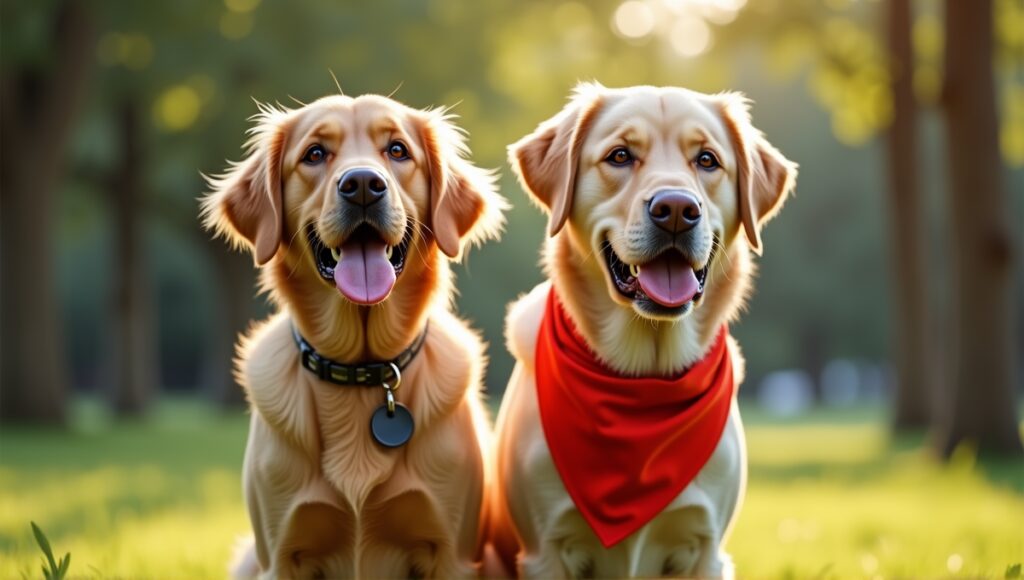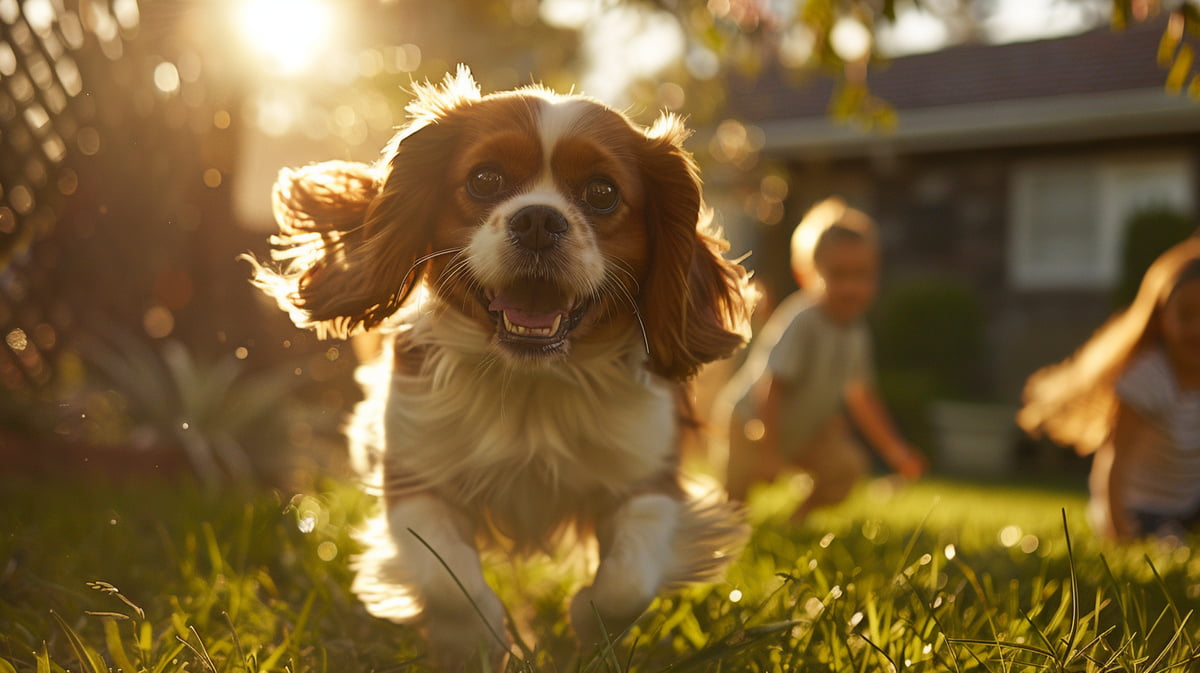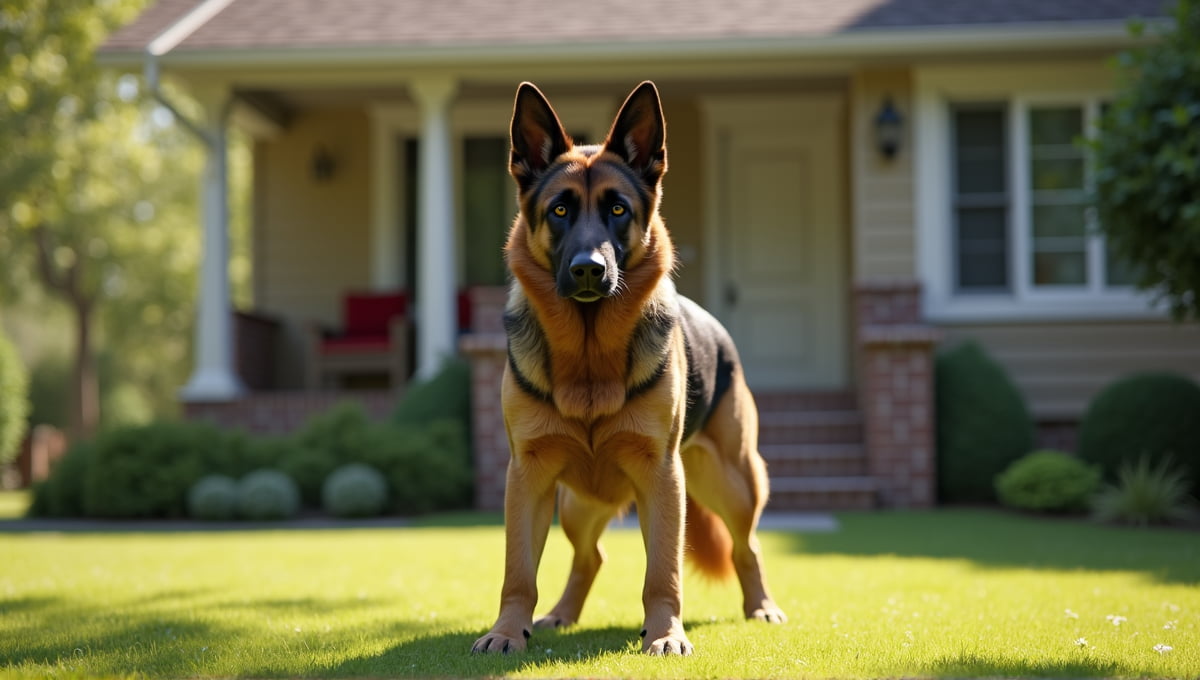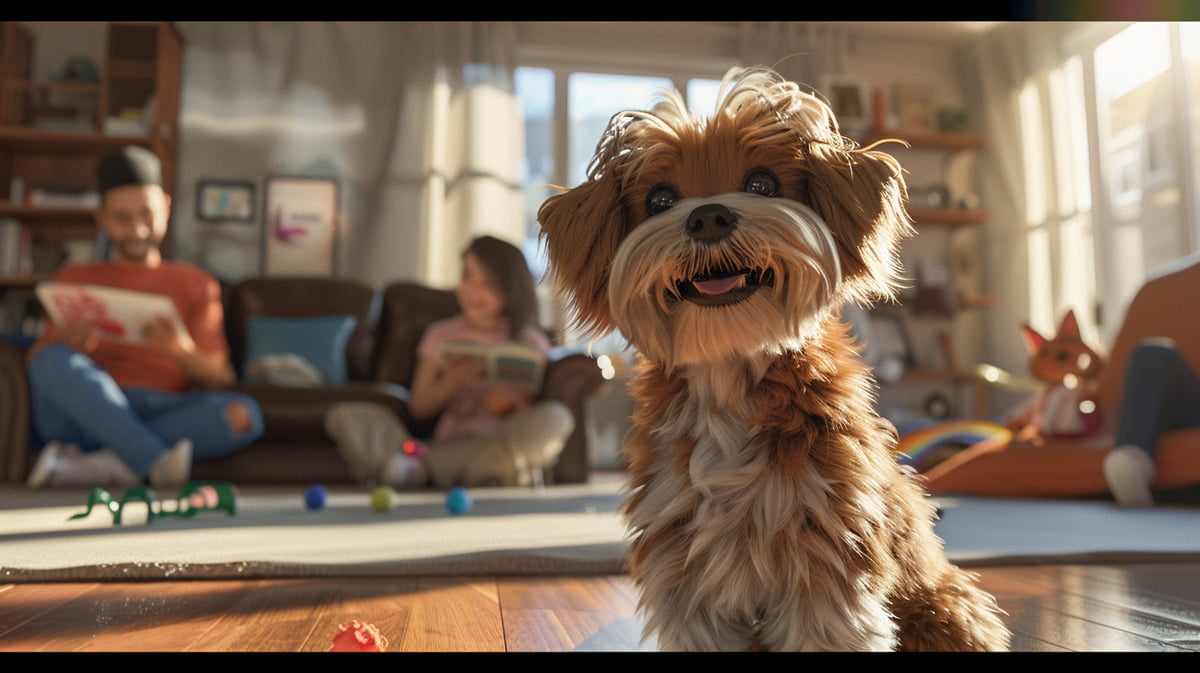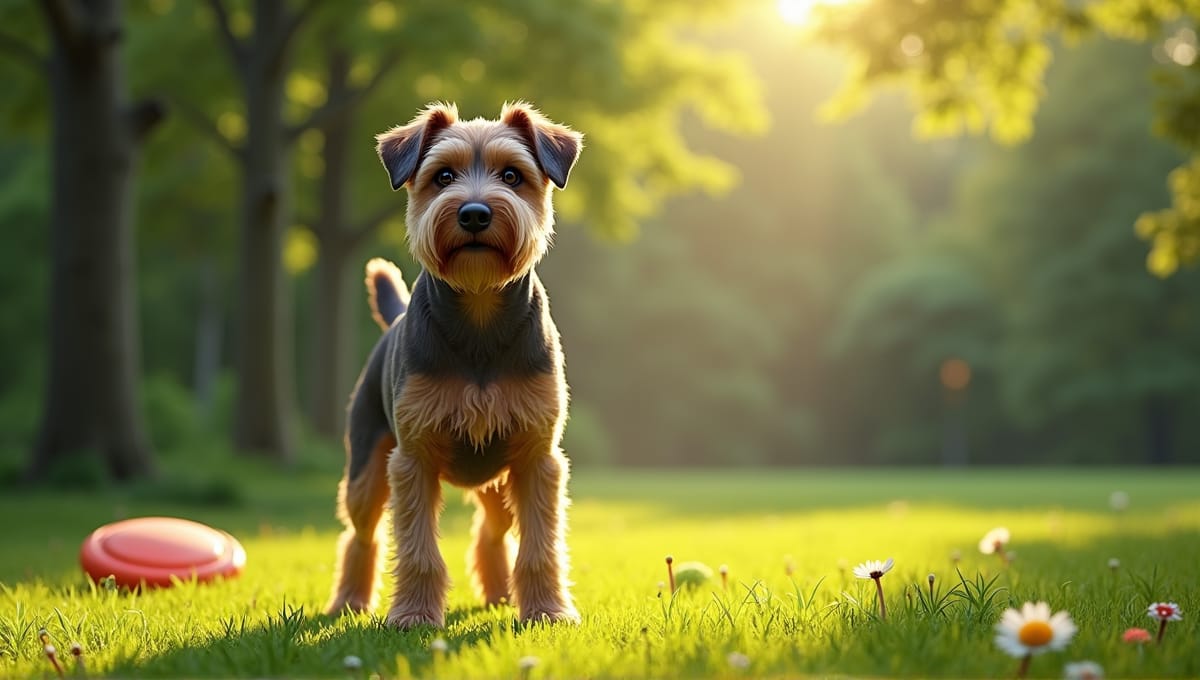Retrievers are amazing dogs. I’ve trained all six AKC-recognized breeds, and each has something special about them. So, which one is best for your lifestyle? Let’s discuss the differences between Labradors, Goldens, Chesapeakes, Flat-Coated, Curly-Coated, and Nova Scotia Duck Tolling Retrievers to help you find your ideal breed.
Understanding Retriever Breeds
The retrievers are a breed group that I’ve had a lot of experience working with, as they were originally bred to help hunters retrieve game. Their gentle mouths allow them to pick up birds without causing any damage. Retrievers are intelligent, versatile, and eager to please, making them excellent family pets and working dogs.
There are six retriever breeds that the American Kennel Club (AKC) recognizes:
- Labrador Retriever
- Golden Retriever
- Chesapeake Bay Retriever
- Flat-Coated Retriever
- Curly-Coated Retriever
- Nova Scotia Duck Tolling Retriever
All retrievers share many of the same general traits. They’re friendly, energetic, and great with kids. Most retrievers also enjoy the water and have coats that resist water. They’re also very trainable and excel in obedience, agility, and other dog sports.
The history of the retrievers dates back to the 19th century when hunters needed a type of dog that could retrieve game on both land and water. Each region developed its own type of retriever to suit that particular type of hunting, and today, the retriever is still commonly used as a hunting dog. It’s also a popular family pet and has found lots of success as a service dog.
Labrador Retriever: America’s Favorite
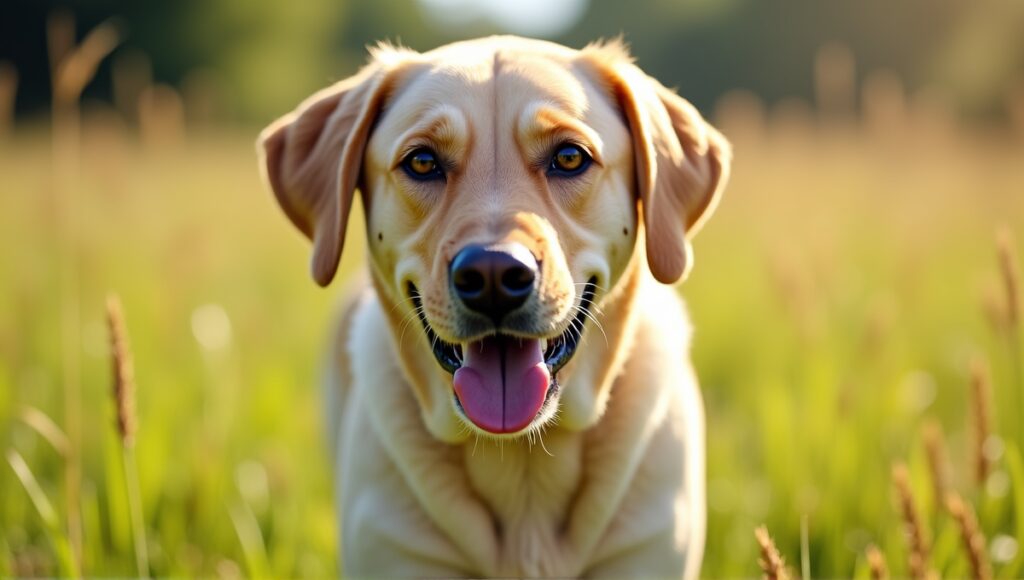
Labrador Retrievers have ranked as the most popular dog breed in the U.S. according to AKC rankings since 1991. And it’s no surprise. These medium to large dogs are friendly, outgoing, and excellent with children. Labs come in three colors:
- black
- yellow
- chocolate
Labrador Retrievers weigh 55 to 80 pounds and stand 21.5 to 24.5 inches tall. They have a strong build and a dense, water-repellent coat. Their tail resembles that of an otter, and they have webbed feet that allow them to excel at swimming.
Labs are famous for their friendly disposition and ease of training. They are very eager to please and quick learners – which is why you’ll find so many labs working as therapy, service, and search and rescue dogs. If you’re considering getting a dog for your family, look also at the best small family dogs.
These dogs are energetic and need plenty of daily exercise. Labs do particularly well with daily walks, runs, or a swim. Without enough exercise, they can become destructive. Mental stimulation through training and puzzle toys is also important.
Unfortunately, Labs are prone to:
- hip and elbow dysplasia
- eye issues
- exercise-induced collapse
Regular vet check-up and keeping your lab at a healthy weight are very important.
Labs are versatile and can make excellent pets whether you live in an apartment or a large home, so long as they get plenty of exercise. If you’re looking for a friendly, energetic family dog, the Lab may be a great fit.
Golden Retriever: The Gentle Giant
Golden Retrievers are popular for their friendly and beautiful golden coats. These dogs are medium to large in size. Golden Retrievers weigh 55-75 pounds and are 21.5-24 inches tall. They have a long, silky coat that comes in various shades of gold.
Golden Retrievers are known for being friendly and mild. They are great with kids and other pets. Golden Retrievers have a soft, gentle mouth, which is advantageous for retrieving game without damaging it. It also means they are less likely to bite.
You should plan to give your Golden plenty of exercise. Goldens love to swim, play fetch, and take long walks. If they don’t get enough exercise, they can become bored and destructive. Mental stimulation through training and interactive toys is also important.
Grooming a Golden Retriever requires some work. Their long hair needs regular brushing to keep it from getting matted. Additionally, Golden Retrievers shed quite a bit, especially during seasonal changes.
Common health problems in Golden Retrievers include:
- hip dysplasia
- cancer
- eye issues
You can prevent some of these problems with regular vet checkups and keeping your dog at a healthy weight. Despite these issues, Golden Retrievers often live to be 10-12 years old when properly cared for.
Chesapeake Bay Retriever: The Rugged Waterfowl Hunter
Chesapeake Bay Retrievers, also known as “Chessies,” are tough looking dogs with a strong will. These dogs were specifically bred to retrieve waterfowl from the icy waters of the Chesapeake Bay. The Chesapeake Bay Retriever weighs 55 to 80 pounds and stands 21 to 26 inches.
The most defining feature of the Chessie is its wavy waterproof coat that comes in various shades of brown. Their coat is somewhat oily, which helps them repel water and makes them excellent swimmers, even in very cold water.
This breed has a strong independent nature. While they are loyal to their family, they can be aloof with strangers. The Chesapeake Bay Retriever requires firm and consistent training from a young age. They are intelligent and capable, though they can also be a bit stubborn.
These dogs need lots of exercise and do well with activities like swimming, hunting, and agility. If they don’t get enough physical and mental exercise, they can become destructive.
Their grooming requirements are fairly low. Their coat naturally repels dirt and water. Regular brushing and the occasional bath should be sufficient, though they do shed seasonally.
Common health problems in Chessies are:
- hip dysplasia
- eye issues
- bloat
Regular vet visits and a proper diet are essential. With proper care, they typically live 10 to 12 years.
Flat-Coated Retriever: The Cheerful Sporting Dog
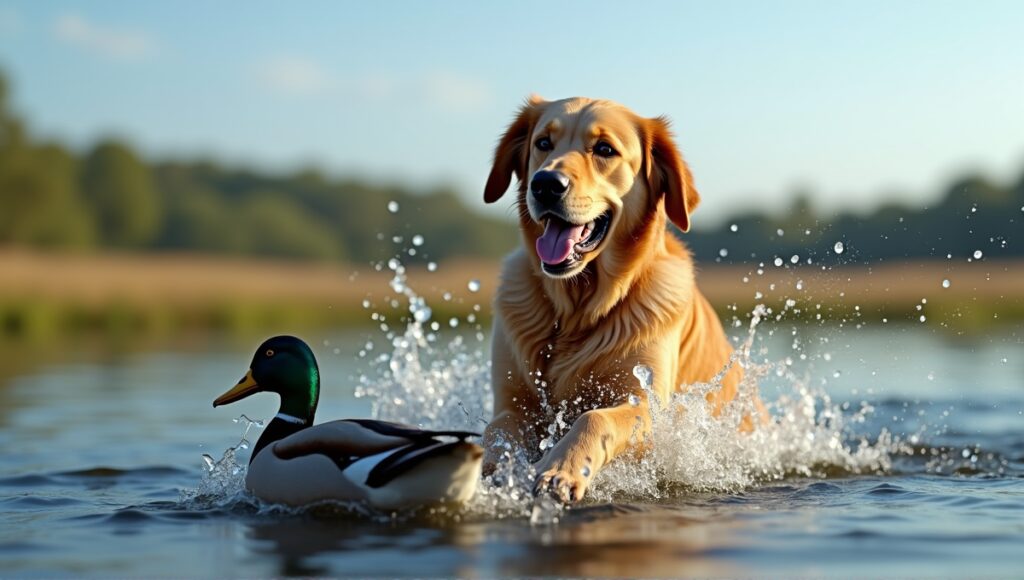
retrievers are often called the Peter Pan of the dog world because they never seem to outgrow their puppy enthusiasm. Flat-coated retrievers weigh in at 55-70 pounds and stand 22-24.5 inches.
Their defining feature is their sleek black or liver coats, and their medium straight hair. They have long muzzles and a kind expression.
Flat-coated retrievers are friendly and outgoing. They’re always up for a game or adventure, and they play well with kids and other animals. However, they may be too high energy for very small children.
Flat-coated retrievers require plenty of daily exercise, and they particularly enjoy activities like agility, flyball, and, of course, fetch. If you don’t provide them with adequate exercise and mental stimulation, they’ll become destructive.
Flat-coated retrievers are relatively low maintenance dogs. They don’t require much grooming beyond regular brushing and the occasional bath, although they do shed seasonally.
The only downsides of flat-coated retrievers are:
- they’re more prone to cancer
- hip dysplasia
- eye issues than other breeds
By feeding your dog a high quality diet, scheduling regular vet check-ups, and monitoring their weight and exercise, you can help them live a long and healthy life. Most flat-coated retrievers live 8-10 years with proper care.
Curly-Coated Retriever: The Versatile Hunter
Curly-Coated Retrievers are a unique looking breed with excellent hunting skills. They’re larger than many other retrievers, weighing 65-100 pounds and standing 23-27 inches tall.
The most notable characteristic of the Curly-Coated Retriever is, of course, its coat. It has small tight curls that cover the entire body and is only available in black or liver. This coat is waterproof, which is helpful for protecting the dog in various hunting conditions.
Curly-Coated Retrievers are more independent than some of the other retriever breeds. They’re intelligent and capable, but can also be a bit stubborn. They’re loyal dogs to their families, though they might be reserved around strange people.
These dogs are very active and require a lot of exercise. They’re great at:
- hunting
- swimming
- other active pursuits
If they don’t get enough physical and mental activity, they might become bored and destructive. Grooming a Curly-Coated Retriever is relatively easy. They don’t require much brushing, but you will need to do some occasional trimming to keep the coat looking nice. They don’t shed much, making them a good choice for some people with allergies.
The breed does have some common health problems to watch out for, including:
- hip dysplasia
- eye issues
- bloat
Regular vet appointments and a proper diet are essential to help ensure the dog lives a healthy life. With good care, they typically live 10-12 years.
Nova Scotia Duck Tolling Retriever: The Smallest Retriever
Nova Scotia Duck Tolling Retrievers, affectionately known as “Tollers,” are the smallest of the retriever breeds. These compact dogs have a unique method of hunting. Nova Scotia Duck Tolling Retrievers weigh 35 to 50 pounds and stand 17 to 21 inches tall.
Tollers have a distinct red coat with white markings. Their medium-length double coat is designed to be water repellent so they can hunt in cold water. They have a fox-like appearance and always look alert.
These dogs were specifically bred to “toll,” or lure, ducks.
- Tollers play fetch on the shore to entice curious ducks to come closer.
- The hunter takes the shot, and the Toller brings the ducks back to shore.
The Nova Scotia Duck Tolling Retriever is a highly intelligent, high-energy dog. They are loving with their families, but they can be reserved with strangers. These dogs require a lot of mental and physical activity, and if they don’t get it, they are likely to become destructive and develop behavioral problems.
You should plan to exercise your Toller every day. They excel in activities like agility, obedience, and, of course, retrieving. You can take them for a walk, run, or swim, but they do need daily exercise.
Common health problems in Toller dogs include:
- hip dysplasia
- eye issues
- autoimmune problems.
Regular vet visits and feeding them a healthy diet are important. With good care, they typically live 12 to 14 years.
If you’re interested in learning about another type of working dog, check out livestock guardian dogs and how they protect farms. These dogs have a different, but equally interesting, role on a farm.
Retriever Breeds in the Field
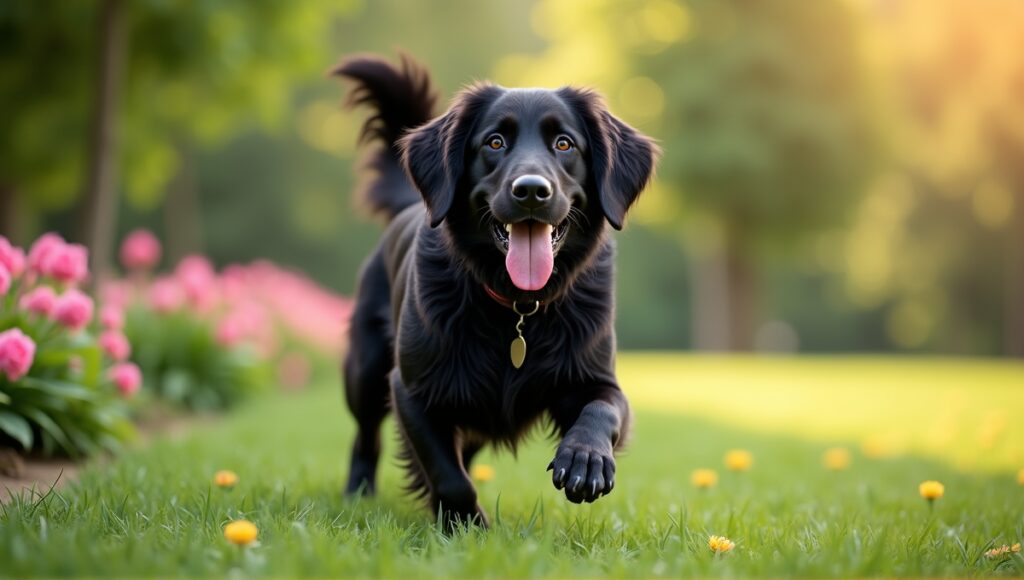
Retriever breeds are exceptional field dogs because they have a natural retrieving instinct. These breeds are specifically valued for their ability to find game and bring it back without ruining it. Each retriever breed also has its own unique strengths in the field.
Retrieving is essentially retriever training for hunting and field work. This work begins at an early age for retrievers, where they start with basic obedience training and then progress to retrieving training. This training includes how to respond to hand signals and whistle commands.
Different retriever breeds have different retrieving styles. For example, the labrador is typically a very eager and direct retriever. On the other hand, the golden retriever tends to be a more calculated retriever. Finally, the Chesapeake Bay retriever is known for being a strong retriever in rough water.
The blind retrieve is a key concept in the hunting retriever world. A blind retrieve is when the dog didn’t actually see the bird fall and therefore relies solely on the handler’s directions to find the bird. Here are a few key points about blind retrieves:
- A blind retrieve is essentially just a test of the dog’s obedience and the dog’s trust in the handler.
- Most blind retrieves a dog makes in the hunting environment are likely less than 30-80 yards from the gun.
- With a well-trained hunting retriever and a good hunting retriever handler, you can execute very precise blind retrieves of over 100 yards.
- A blind retrieve is perhaps the single best example of the perfect communication between a man and a dog.
When you compare the retrieving performance of the various hunting retriever breeds, the Labrador retriever often comes out on top. They are just the most versatile and are perhaps the best at doing both land and water retrieves. However, both the golden retriever and Chesapeake Bay retriever are also fantastic hunting retrievers.
Choosing the Right Retriever Breed
The right retriever breed for you is contingent on your lifestyle and needs. Take into account factors like the dog’s size, energy levels, and grooming needs. Also, think about the reason you want a retriever (companion, hunting, dog sports).
Select a breed with characteristics that align with your lifestyle. If you’re an active outdoorsy person, a Lab or Golden Retriever is a great fit. If you value independence, a Chessie or Curly-Coated Retriever might be a better option.
Different retriever breeds have varying exercise and space needs. Here’s a brief comparison:
| Breed | Exercise Needs | Space Needs |
|---|---|---|
| Labrador Retriever | High | Medium to large |
| Golden Retriever | High | Medium to large |
| Chesapeake Bay Retriever | High | Medium to large |
| Flat-Coated Retriever | Very high | Medium to large |
| Curly-Coated Retriever | High | Medium |
| Nova Scotia Duck Tolling Retriever | High | Small to medium |
Additionally, grooming needs differ among the breeds. Labs and Chessies have low grooming needs. Goldens and Flat-Coats require more frequent brushing, while Curly-Coats require specialized grooming.
The amount of training each breed needs also varies.
- Labs and Goldens are typically easier to train.
- Chessies and Curly-Coats are often more independent and may require a little more effort to train. Regardless of the breed you choose, all retrievers benefit from early socialization and consistent training.
Keep in mind that every dog is an individual. Spend time with different breeds before selecting a retriever breed. With the right fit, you’ll have a loyal dog for many years to come.
Before We Go
Retrievers are fantastic dogs with special characteristics and skills. I’ve personally witnessed their success as both family pets and working dogs. You now know about the six AKC retriever breeds, their attributes, and requirements.
Keep in mind that each retriever has its own individual differences. Do your research and meet various retrievers before making a selection. The best retriever will provide you with years of happiness, adventure, and friendship. Your ideal furry sidekick is somewhere out there!

